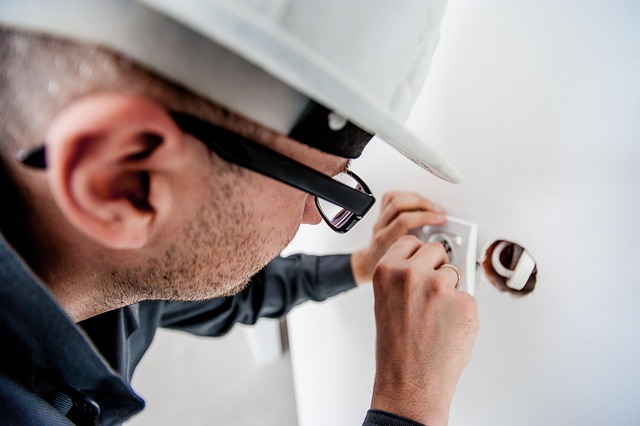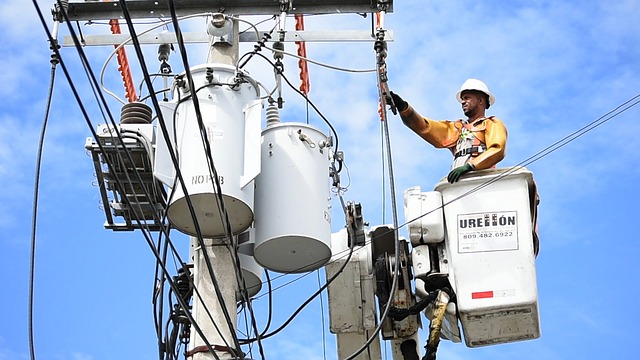Electricians should replace old fuse boxes with modern circuit breakers for enhanced safety and protection against overloads, fires, and short circuits. Circuit breakers handle higher currents, interrupt circuits quickly, offer easy installation, testing, and replacement, and have adjustable trip points. Replacing fuses involves turning off power, using non-contact voltage testers, removing old fuses, noting amperage ratings, and installing appropriate circuit breakers while prioritizing safety measures like PPE, de-energizing areas, proper grounding, compatibility checks, tool inspection, and adherence to industry standards.
Upgrading from old fuses to modern circuit breakers is a smart move for any electrician. This article guides you through the process, addressing the limitations of traditional fuses and the superior features of today’s circuit breakers. You’ll learn about the benefits of this upgrade, including enhanced safety and efficiency. We’ll walk you through the step-by-step replacement process and highlight crucial safety precautions for handling electrical upgrades, ensuring a smooth transition to more advanced protection.
- Understanding Old Fuses and Their Limitations
- The Rise of Modern Circuit Breakers: Features and Benefits
- Steps to Replace Fuses with Circuit Breakers
- Safety Precautions for Electricians When Handling Electrical Upgrades
Understanding Old Fuses and Their Limitations

Electricians often encounter old fuse boxes during renovation projects, which can pose several challenges. Traditional fuses, once prevalent in home electrical systems, served as a basic form of overcurrent protection. However, they have significant limitations compared to modern circuit breakers. Fuses are designed to interrupt the circuit when an excessive current flows, but they have a few drawbacks.
One major issue is their limited tripping capacity; fuses blow or melt after protecting the circuit just once. This means frequent replacements, which can be cumbersome and time-consuming. Additionally, old fuses may not provide adequate protection against modern electrical loads and complex circuit configurations, increasing the risk of overloads and potential fires. An electrician might notice that these outdated fuses are a safety hazard, especially in older homes, and their removal and replacement with modern circuit breakers is a crucial step towards enhancing home electrical safety.
The Rise of Modern Circuit Breakers: Features and Benefits

In recent years, the role of circuit breakers in electrical systems has evolved significantly, replacing the outdated fuse as the go-to safety mechanism for many electricians. Modern circuit breakers offer a host of features and benefits that make them a superior choice for homes and businesses alike. Firstly, they are designed to handle higher currents, ensuring more reliable protection against overloads. This advanced capability allows them to interrupt circuits quickly when necessary, preventing potential fires and electrical damage.
Moreover, circuit breakers provide enhanced user-friendliness. They are easy to install, test, and replace, making routine maintenance tasks for electricians a breeze. Many modern models also feature adjustable trip points, allowing technicians to set the breaker to specific current levels tailored to different applications. This versatility makes them a versatile solution in various industries.
Steps to Replace Fuses with Circuit Breakers

Replacing old fuses with modern circuit breakers is a straightforward process that every homeowner or electrician should be familiar with. Here’s how to do it:
1. Safety First: Turn off the power at the main electrical panel before starting any work. This ensures your safety and prevents accidental shocks or short circuits. Use non-contact voltage testers to verify that no current is flowing through the wires you’ll be working on.
2. Locate and Identify: Find the fuse box, often located in a basement, closet, or garage. Remove the old fuse by turning it clockwise until it pops out. Check the rating (ampere) of the fuse; this will help you choose the appropriate circuit breaker. Note that circuit breakers look similar to fuses but are designed to interrupt power flow automatically for better safety.
Safety Precautions for Electricians When Handling Electrical Upgrades

When an electrician undertakes the task of replacing old fuses with modern circuit breakers, safety should be the top priority. Before starting any electrical upgrade, it’s crucial for electricians to ensure they’re equipped with appropriate personal protective equipment (PPE), including insulated gloves and boots, as well as safety glasses to protect against potential debris and arcs. The work area must be de-energized completely to prevent any accidental shocks or short circuits. Grounding the system properly is a vital step to divert any stray electrical current and ensure the safety of both the electrician and the equipment.
Moreover, understanding the specifications and compatibility of new circuit breakers is essential. Electricians should verify the voltage, amperage, and type of breaker being installed to avoid any misconnections that could lead to severe consequences. Regularly inspecting tools and equipment for wear and tear, and maintaining them in good condition, also contributes to a safer working environment. Staying up-to-date with industry standards and safety protocols ensures that every electrical upgrade is carried out efficiently and securely.
Upgrading from old fuses to modern circuit breakers is a strategic move for any electrician. By embracing these advanced safety devices, professionals can significantly enhance electrical systems’ reliability and efficiency. This transformation not only simplifies troubleshooting but also provides better protection against overloads and short circuits, ensuring the safety of both properties and their occupants. For electricians, staying informed about such innovations is key to offering top-notch services and keeping up with industry standards.
